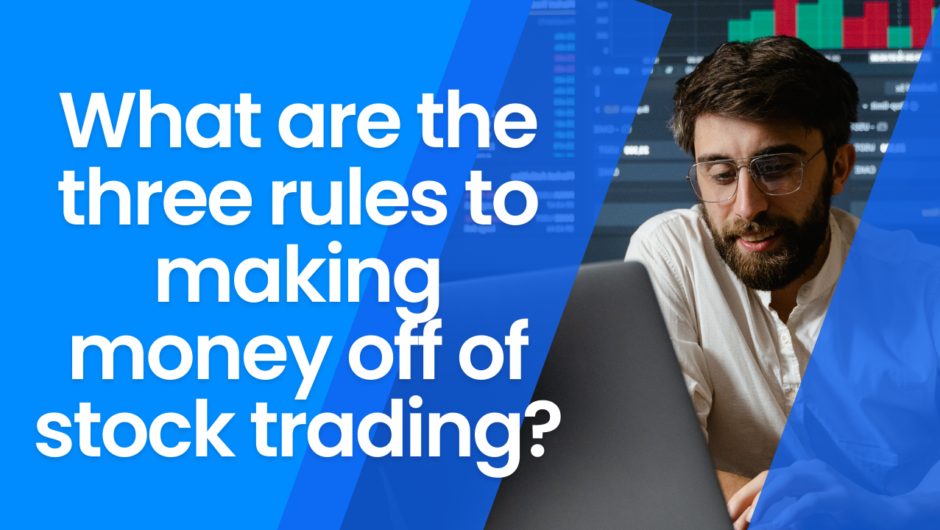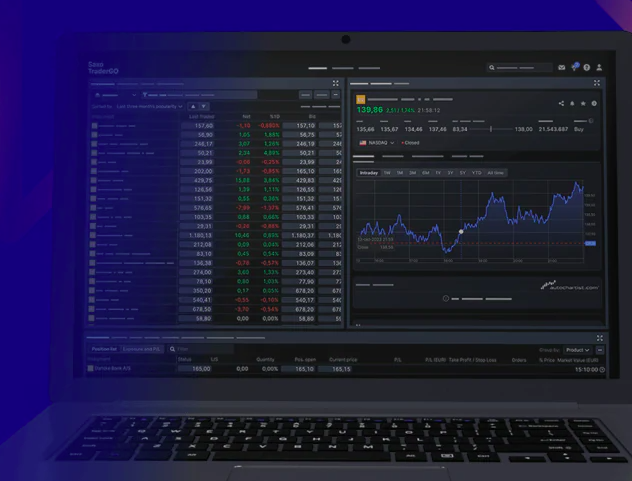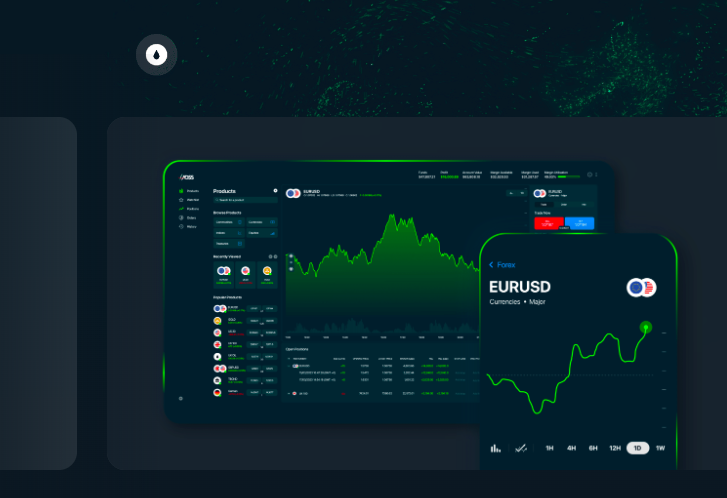The relationship between a Demat (Dematerialized) account and a Trading account is fundamental in the world of securities trading. A Demat account acts as an electronic repository for holding and managing financial securities, converting them into digital form. On the other hand, a Trading account facilitates the buying and selling of these securities on the stock exchange. Together, these accounts streamline the process of trading by seamlessly integrating the storage and execution aspects of financial transactions. This exploration delves into the symbiotic connection between Demat and Trading accounts, highlighting their roles, significance, and how their integration has revolutionized the landscape of stock market participation and investment management.
What is a Trading Account?
A Trading Account is a financial instrument that facilitates the buying and selling of various financial instruments, primarily stocks, on stock exchanges. It serves as a gateway for investors to participate actively in the stock market. When an investor places an order to buy or sell a security, the Trading Account is the platform through which these transactions are executed.
Key features of a Trading Account include order placement, trade execution, and monitoring of market positions. Investors can initiate various types of orders, such as market orders or limit orders, depending on their trading strategy. The Trading Account connects with the stock exchange, enabling seamless and quick execution of trades. Trading Account facilitates the buying and selling of securities, the Demat Account stores and manages these securities in electronic form. Together, these accounts streamline the entire process of securities trading, offering investors a comprehensive solution for participating in the dynamic world of financial markets. The ease of use and accessibility provided by Trading Accounts has significantly contributed to the democratization of stock market participation.
Integration of Demat and Trading Accounts
The integration of Demat and Trading accounts represents a pivotal development in the financial landscape, streamlining the entire process of securities trading. While a Demat (Dematerialized) account serves as the repository for holding and managing electronic securities, a Trading account complements it by facilitating the buying and selling of these securities on the stock exchange.
Integration ensures a seamless and efficient trading experience. When an investor places a buy order through the Trading account, the securities are debited from the Demat account upon successful execution. Similarly, when a sell order is executed, the resulting securities are credited back to the Demat account. The integration also ensures a faster settlement process, enhancing the overall efficiency of securities transactions.
How Trading Accounts Enable Buying and Selling?
Trading accounts play a pivotal role in enabling the dynamic processes of buying and selling securities on the stock market. These accounts serve as the gateway through which investors interact with the financial markets, executing transactions efficiently.
- Order Placement: Investors use their trading accounts to place orders to buy or sell securities. They can choose from various order types, such as market orders or limit orders, depending on their trading strategy.
- Connectivity to Stock Exchange: The trading account acts as a bridge between the investor and the stock exchange. When an order is placed, the trading account connects with the exchange, transmitting the order for execution.
- Trade Execution: Once the order reaches the stock exchange, it undergoes the process of matching with a corresponding buy or sell order. The trading account ensures the timely execution of these trades, facilitating the actual buying or selling of securities.
- Real-Time Monitoring: Trading accounts provide investors with real-time updates on market prices, executed trades, and overall portfolio performance. This feature empowers investors to make informed decisions based on the latest market dynamics.
- Integration with Demat Account: Trading accounts work in tandem with Demat accounts. When a trade is executed, the securities are either credited or debited from the investor’s Demat account, ensuring efficient and secure management of electronic securities.
Roles and Responsibilities
The roles and responsibilities of Demat and Trading accounts are distinct yet interdependent, working in tandem to streamline the entire process of securities trading.
Demat Account
- Storage of Securities: The primary role of a Demat account is to store and manage financial securities in electronic form. It eliminates the need for physical share certificates by converting them into digital format.
- Safekeeping: Ensuring the safekeeping of securities, a Demat account safeguards them from risks such as theft, loss, or damage that can be associated with physical certificates.
- Settlement of Trades: In collaboration with the Trading account, a Demat account facilitates the settlement of trades. When a buy or sell order is executed, the corresponding securities are either credited or debited from the Demat account.
Trading Account
- Order Placement: The Trading account is instrumental in initiating trades. Investors use this account to place orders, specifying whether they want to buy or sell a particular security.
- Connectivity to Stock Exchange: Acting as a liaison between the investor and the stock exchange, the Trading account connects with the exchange to transmit buy or sell orders for execution.
- Trade Execution: The Trading account ensures the timely and accurate execution of trades. It plays a crucial role in matching buy and sell orders, facilitating the actual buying or selling of securities.
The Interaction Between Demat and Trading Accounts During Transactions
The interaction between Demat and Trading accounts during transactions is a seamless process integral to modern securities trading. When an investor initiates a trade, the collaboration between these accounts ensures efficient execution and settlement.
- Order Placement: The investor uses the Trading account to place an order, specifying the type (buy or sell) and quantity of securities they intend to transact.
- Connectivity to Stock Exchange: The Trading account acts as a conduit between the investor and the stock exchange. It transmits the order to the exchange for matching and execution.
- Trade Execution: Once the stock exchange matches the buy and sell orders, the Trading account ensures the timely execution of the trade. For a buy order, the securities are debited from the seller’s Demat account, and for a sell order, the securities are credited to the buyer’s Demat account.
- Real-Time Updates: Throughout this process, both accounts provide real-time updates to the investor. The Trading account relays information about the order status and execution, while the Demat account reflects the changes in the investor’s holdings.
Common Questions and Concerns
- Do I Need Both Demat and Trading Accounts?
- Yes, for seamless stock market participation, both accounts are typically required. The Demat account holds and manages securities, while the Trading account facilitates buying and selling.
- How Long Does It Take to Open These Accounts?
- The time to open accounts varies among providers. Online platforms often offer a swift process, while traditional institutions may take longer due to paperwork.
- What Fees Are Associated with These Accounts?
- Both Demat and Trading accounts may incur fees such as account opening charges, annual maintenance charges, and transaction fees. It’s crucial to understand the fee structure before opening an account.
- Can I Have Multiple Demat or Trading Accounts?
- Yes, you can have multiple accounts. However, maintaining clarity on your holdings and transactions becomes essential to avoid confusion.
- What Happens If I Forget My Trading Account Password?
- Most platforms have a password recovery process. Typically, it involves verifying your identity through registered email or mobile number to reset the password.
Conclusion
In conclusion, the relationship between Demat and Trading accounts is indispensable for modern securities trading. The seamless collaboration between these accounts simplifies buying, selling, and managing electronic securities, enhancing efficiency and accessibility. Investors benefit from real-time monitoring, secure transactions, and simplified settlement processes. Addressing common questions and concerns ensures a clear understanding of account functionalities. As technology advances, this integrated approach continues to democratize stock market participation, making it more user-friendly. Choosing reliable providers, understanding associated fees, and staying informed about tax implications contribute to a well-rounded investment experience in the dynamic realm of financial markets.
Also Read:
- Fixed Deposits vs Money Market Funds ; Which One is Right for You?
- International Mutual Funds in India- Should you Invest?
- Should you Invest in retirement savings fund?
- Potential Risk Matrix in Debt Mutual funds- How to Interpret?

Hello, I am Tanisha Kriplani, graduated in computer science from Delhi University. I am passionate about web content writing and have a strong interest in Data Analytics and Data Engineering.












